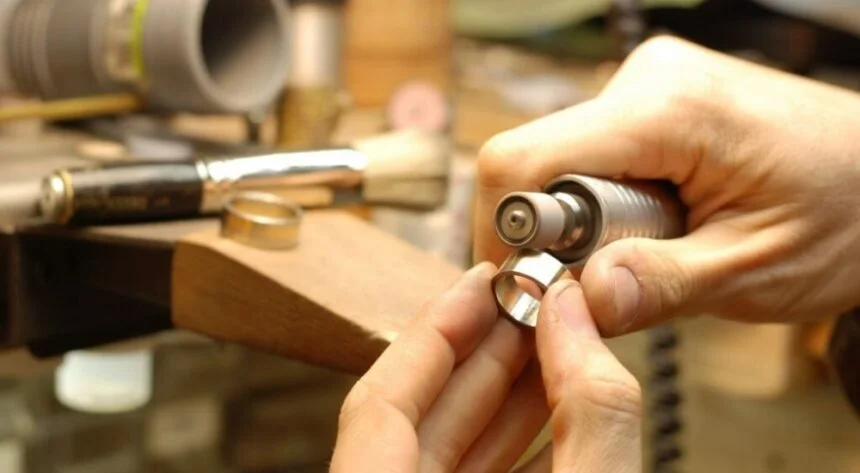The jewelry manufacturing industry is a dazzling blend of art and science, where creativity meets precision. From the shimmering allure of gemstones to the intricate craftsmanship of metalwork, jewelry manufacturers play a pivotal role in bringing exquisite designs to life. This industry not only caters to personal adornment but also plays a significant part in cultural expressions, fashion trends, and investment portfolios.
Jewelry manufacturing is a fascinating blend of art, science, and craftsmanship that transforms raw materials into beautiful adornments. In this article, we’ll dive deep into the world of jewelry production, exploring its process, evolution, challenges, and more. Let’s get started!
What Is Jewelry Manufacturing?
Jewelry manufacturing refers to the process of creating wearable pieces of art, including necklaces, rings, bracelets, and earrings. It involves a series of steps, from conceptual design to the finished product, blending creativity with precision. Manufacturers are the backbone of the jewelry industry, bridging the gap between artistic vision and tangible products. They work with designers, artisans, and advanced technologies to bring creations to life.
The Evolution of Jewelry Manufacturing
Jewelry crafting dates back thousands of years, with ancient civilizations using techniques like hand-carving, engraving, and metal hammering to create intricate designs. Today, advanced machinery and technology, such as 3D printing and laser cutting, have revolutionized the industry, enabling precision and scalability like never before.
The Jewelry Manufacturing Process
Every piece starts with a vision, often sketched on paper or digitally. Designers outline the structure, style, and details of the jewelry. Computer-aided design (CAD) software creates a detailed 3D model, which is then used to produce prototypes for refinement.
Choosing Precious Metals
Gold, silver, and platinum are common choices, each offering unique properties and aesthetic appeal. Diamonds, rubies, sapphires, China Jewelry manufacturer,and other gemstones are chosen based on quality, color, and cut, enhancing the design. Lost-wax casting is a popular method where molten metal is poured into a mold to create the basic structure. Handcrafted pieces showcase artistry and uniqueness, while machine-made jewelry ensures consistency and efficiency.
Polishing and Plating
The final stages involve polishing for shine and plating for durability, adding layers like rhodium for a sleek finish. Each piece undergoes rigorous checks to meet industry standards and customer expectations.
Types of Jewelry manufacturing
Jewelry manufacturers play a vital role in the creation of beautiful pieces, catering to various demands and market segments. They can be broadly categorized based on their production approach, target audience, and business model. Here’s a closer look at the major types of jewelry manufacturers:
Custom Jewelry manufacturing
Custom jewelry manufacturers focus on creating unique, one-of-a-kind pieces tailored to individual clients’ preferences.
- Key Features:
- High level of personalization.
- Collaboration between designers and clients to bring specific visions to life.
- Often use traditional techniques alongside modern tools like CAD for intricate detailing.
- Target Audience:
- Customers seeking bespoke designs for special occasions like weddings or anniversaries.
Example: A bride commissioning a custom engagement ring featuring a family heirloom gemstone.
Mass Production Jewelry Companies
These manufacturers produce jewelry on a large scale, focusing on meeting high-volume demands efficiently.
- Key Features:
- Standardized designs produced in bulk.
- Use of automated machinery to ensure consistency.
- Often offer affordable price points due to economies of scale.
- Target Audience:
- Retailers and customers looking for trendy, accessible jewelry options.
Example: Jewelry lines found in department stores or online marketplaces.
Boutique Jewelry Manufacturers
Boutique manufacturers operate on a smaller scale, blending artisan craftsmanship with modern trends.
- Key Features:
- Limited-edition collections or niche designs.
- Use of premium materials and intricate craftsmanship.
- Focus on maintaining brand identity and exclusivity.
- Target Audience:
- Clients looking for stylish, high-quality, and semi-exclusive pieces.
Example: A small brand offering limited-edition gemstone necklaces.
High-End Luxury Jewelry manufacturing
Luxury manufacturers specialize in creating high-value pieces that often serve as status symbols.
- Key Features:
- Use of rare, premium-grade materials like platinum, flawless diamonds, and exotic gemstones.
- Exceptional craftsmanship with a focus on exclusivity.
- Often produce custom or small-batch designs for elite clientele.
- Target Audience:
- High-net-worth individuals and collectors.
Example: Iconic brands like Cartier or Tiffany & Co.
The Role of Technology in Jewelry Manufacturing
3D printing streamlines the production of complex designs, reducing time and waste. CAD tools allow for precise designs and easy adjustments, transforming ideas into reality.
Sustainability in Jewelry Manufacturing
Manufacturers are increasingly adopting practices to source conflict-free diamonds and responsibly mined metals. Using recycled materials and minimizing waste helps reduce the environmental impact of jewelry production.
Challenges in Jewelry Manufacturing
Achieving a balance between affordability and premium quality is a constant challenge for manufacturers. The fast-paced nature of fashion demands innovation and adaptability to stay relevant.
Conclusion
Jewelry manufacturing is a dynamic industry that combines tradition with technology to create stunning works of art. From the initial concept to the final product, every step is a testament to craftsmanship and innovation.
IF you want to learn about icryptox, please visit incestflix.ca


